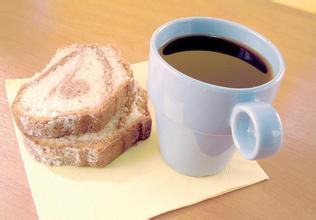Introduction to the characteristics of High-quality Coffee beans in Coffee Variety producing areas of Cochell Manor, Ethiopia
Ethiopia's coffee grading and quality control system mainly has two indicators: visual inspection and cup evaluation. The inspection items include color, cleanliness, origin, taste and characteristics of coffee beans. Export classification is indicated by simple numbers, with the best washed coffee being grade 5 and the best sun-cured coffee being grade 4. After classification, the origin can be exported. Usually exports are paid by letter of credit, which can reduce the risk of collection by exporters and give quality assurance to importers.
By law, all coffee must be sold through auctions held in Addis Ababa and Diredava. During the coffee harvest season, such auctions are even held twice a day.
Coffee outlet
Coffee is Ethiopia's most important export cash crop and the main source of foreign exchange earnings. Ethiopia's coffee exports account for about 3% of the world market share, making it the eighth largest coffee exporter in the world. Coffee exports increased steadily from 58,000 tons in 1990-1991 to 110,000 tons in 1995 - 1996 and remained at that level for the next few years. Export volume exceeded 110,000 tons in 2001 - 2002 and reached 127,000 tons in 2002 - 2003. The decade-long decline in coffee prices on the international market has seriously affected Ethiopia's foreign exchange earnings. Coffee exports accounted for more than half of Ethiopia's foreign exchange earnings before coffee prices dropped sharply, but now they account for only about 35 percent. However, coffee prices began to recover in 2002, rising from 41 cents per pound in September 2001 to 52 cents per pound in 2002 and 59.7 cents per pound in 2003, according to the International Coffee Organization. The average price for March 2004 was 60.8 cents per pound, a 50 per cent increase from September 2001. This is great news for Ethiopia, the home of coffee, and if you don't think Ethiopian coffee is the best coffee in the world, you don't know enough about coffee. There are currently three most important coffee bean origins in the world: arabica, robasta and liberia. Moreover, many people do not know that this Arabica coffee tree accounts for 70% of the world's coffee production. Almost all of the world's famous coffee varieties are Arabica species, and the country of origin of this coffee tree is Ethiopia, the star of the African continent. This coffee is grown at altitudes ranging from 1400 to 1800 meters. Arabica coffee, plucked straight from the plantation, is served exclusively to soldiers who are about to go to war. It wasn't until the 11th century that people began to brew coffee with water as a beverage. In the 13th century, Ethiopian troops invaded Yemen, bringing coffee to the Arab world. Because Islam prohibits believers from drinking alcohol, some religious people think this drink stimulates nerves and violates the doctrine, and once banned and closed coffee shops, but Egypt's Sultan thinks coffee does not violate the doctrine, so the ban is lifted, coffee drinks quickly spread in Arab regions. The word Coffee comes from the Arabic Qahwa, meaning "vegetable drink", which later spread to Turkey and became the origin of the word in European languages. Coffee cultivation and production methods have also been continuously improved and gradually perfected by Arabs.
Ethiopian yega-shefi kocher coffee aromas lively, mango mixed jasmine flowers. The coffee has mango and honey aromas with hints of caramel and jasmine. On the palate, the fruity aromas of peach, mango and citrus jump on the tongue, especially as the coffee cools. Lively acidity and black tea texture, taste long aftertaste, bright flavor, rich fruit flavor is generally sold on the market after the coffee beans are mixed. Generally, different types of coffee beans are roasted and mixed according to a certain proportion to pursue a better taste. You'd better drink the coffee beans quickly and see how long the shelf life is. It's best to drink them six months before the date written on them. Coffee powder must be sealed, it usually goes bad after 15 minutes of exposure to air. The packaging of coffee beans is now a lot of foreign vacuum packaging is to see whether there is a small mouth on the belt can smell the taste of coffee. You subtract one year from the Best before date and that's usually the packaging period. After 3 weeks of encapsulation, it can be sealed and stored. If it hasn't been three weeks, you better deflate it again.

Important Notice :
前街咖啡 FrontStreet Coffee has moved to new addredd:
FrontStreet Coffee Address: 315,Donghua East Road,GuangZhou
Tel:020 38364473
- Prev

Introduction to the Flavor and Taste of Coffee in Xidamo Shachiso area of Ethiopia
Ethiopia is rectangular, with a ratio of length to width of 3:2. From top to bottom, it is composed of green, yellow and red parallel equal horizontal rectangles, with the national emblem in the middle of the flag. Since the end of the 19th century, Ethiopia began to use the green, yellow and red cross-striped national flag. In modern history, Ethiopia is the first African country to join the forest of free nations. [8] to this century
- Next

Introduction to the Flavor description of Flavor Coffee beans in the Coffee Variety producing area of Ireta Manor in Panama
Panama Coffee is grown in the western part of the country, near Costa Rica and the Pacific Ocean. The Boquet district of Chiriqui province is the most famous for its coffee, and Vocan,Santa Clara is also famous. Other areas include David, Remacimeinto, Bugaba and Tole.
Related
- Does Rose Summer choose Blue, Green or Red? Detailed explanation of Rose Summer Coffee plots and Classification in Panamanian Jade Manor
- What is the difference between the origin, producing area, processing plant, cooperative and manor of coffee beans?
- How fine does the espresso powder fit? how to grind the espresso?
- Sca coffee roasting degree color card coffee roasting degree 8 roasting color values what do you mean?
- The practice of lattes: how to make lattes at home
- Introduction to Indonesian Fine Coffee beans-- Java Coffee producing area of Indonesian Arabica Coffee
- How much will the flavor of light and medium roasted rose summer be expressed? What baking level is rose summer suitable for?
- Introduction to the characteristics of washing, sun-drying or wet-planing coffee commonly used in Mantenin, Indonesia
- Price characteristics of Arabica Coffee Bean Starbucks introduction to Manning Coffee Bean Taste producing area Variety Manor
- What is the authentic Yega flavor? What are the flavor characteristics of the really excellent Yejasuffi coffee beans?

